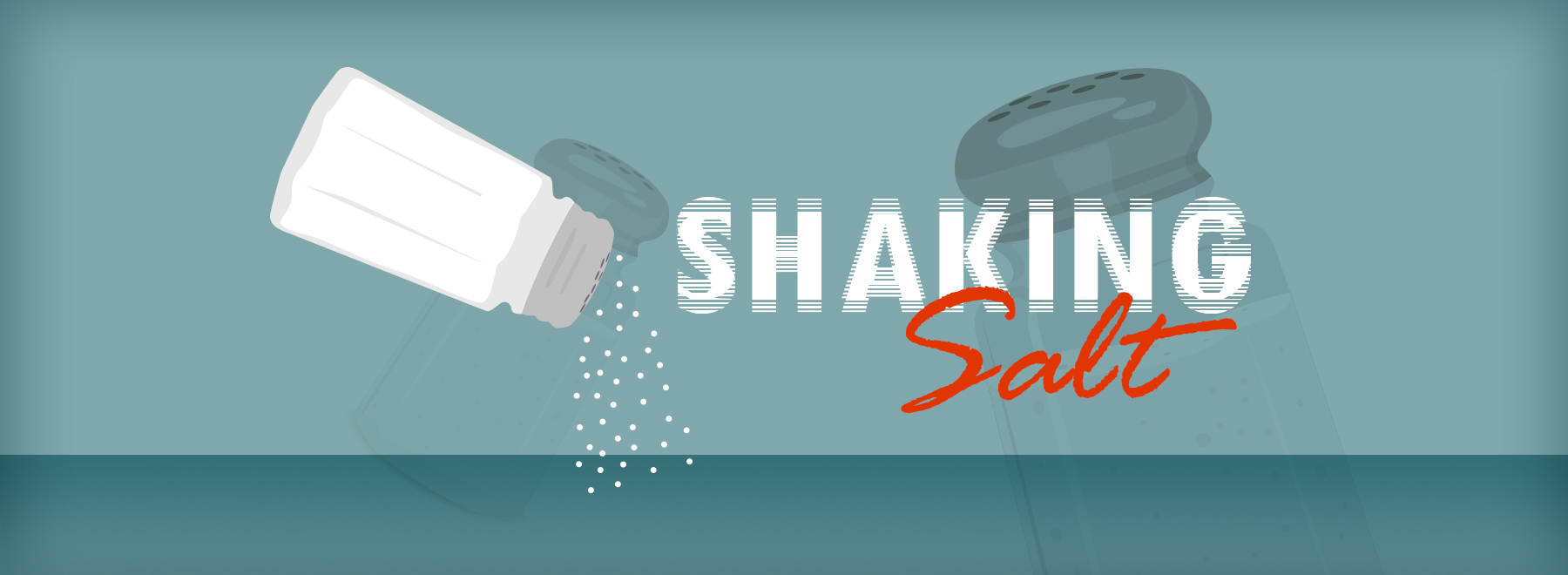UMMC expert offers easy suggestions for lowering daily sodium intake
Note: This story appears in the August 2018 edition of CONSULT, the monthly e-newsletter published by the UMMC Division of Public Affairs that focuses on cutting-edge clinical advances, innovative educational programs and groundbreaking research occurring at UMMC. To receive CONSULT in your email, visit www.umc.edu/CONSULT to sign up.
They are among our favorites. And they are among the saltiest.
Pizza, pickles and deli meats are among the foods Americans crave, yet their health “minuses” include lots of excess sodium. Ditto for canned soups, salted snacks, fresh and processed chicken, cheese, burgers and sandwiches.
On average, Americans are consuming about 3,400 milligrams of sodium daily, according to the Centers for Disease Control and Prevention. That’s 50 percent more than the maximum 2,300 milligrams of table salt per day – about a teaspoon – that experts recommend. Ideally, it should be no more than 1,500 milligrams per day for most adults.
Too much salt in their diet leaves many people more vulnerable to high blood pressure, stroke and heart attack. The higher their blood pressure, the greater the strain on their heart, arteries, kidneys and brain. Salt often is a culprit in heart and kidney disease and can lead to those organs’ failure.

“Salt attracts water, so when we consume too much salt, we hang on to more water than we need,” said Dr. Josie Bidwell, associate professor of nursing and preventive medicine at the University of Mississippi Medical Center. “That increases our blood volume, which makes our blood pressure go up. The more volume you have, the harder your heart has to work to pump it around.”
As much as 75 to 80 percent of sodium in a person’s diet comes from packaged and processed foods, said Bidwell, who runs UMMC’s wellness clinic.
“We used to think that it was table salt, and of course we want to limit that, but if we can change the amount of processed or packaged foods we start with, then adding a little salt during the cooking process is not the big problem.”
Face it: People won’t eat food if it’s not appealing.
“If you don’t add seasonings to food, it doesn’t taste good,” Bidwell said. “Our taste buds have become accustomed to wanting things that are super-salty, so we over-salt. But if you need to reduce your salt, first work on cutting down on processed and packaged things.”
Cutting down on salt doesn’t mean cutting it out of your diet entirely, Bidwell said. Instead, make better choices.
“Snack time at the office is a good opportunity,” she said. “Instead of reaching for something from the vending machine or eating a package of peanut butter crackers, change to a piece of fruit and a little handful of nuts.”
Set some reasonable goals when it comes to salt consumption. If you’re eating fast food seven days a week, she said, cut it down to five – and choose more wisely what you order.
“If you normally get a burger and fries, that’s a ton of salt and calories,” she said. “Get maybe one of them, and instead of the other, pick a side salad or a fruit cup.”
She recommends a few more tips:
• When possible, choose fresh foods, not processed foods that almost always are highly salty.
• Use the nutrition facts label to check the amount of sodium in a food or drink. Look for foods with 5 percent Daily Value or less of sodium. A DV of 20 percent or more is high. When cooking grains, don’t add salt.
• Look for foods labeled “low sodium” or “no salt added.”
• Load up on foods with no salt, such as fresh fruits like apples, oranges or bananas; fresh vegetables like spinach, carrots or broccoli; frozen vegetables without added butter or sauce; and canned vegetables with no salt added.
• When cooking grains, don’t add salt.
• Try one of the sodium-replacement salts available in grocery or discount stores that taste like salt but include potassium instead of sodium as a key ingredient. Experts say these replacements might actually help to lower blood pressure because of the helpful effects of potassium. If food comes with a seasoning packet, use only part of the packet.
• Dilute salt by adding liquid to dishes like soups, stews, casseroles and other liquid-based dishes. Add fat to “absorb” the taste of the salt for most dishes. Or add bland foods such as potatoes, grains or bread, or replace salt with something tangy or sour, like lemon juice.
For more tips, visit the U.S. Department of Health and Human Services’ healthfinder.gov website.


